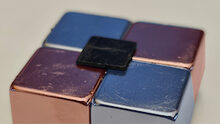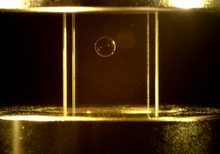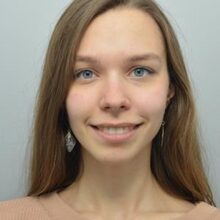Posts
Publication on new types of materials for magnetic levitation and feedback cooling!
Read about our latest experimental paper on developing new types of diamagnetic materials for levitated extreme sensors and the performance of real-time feedback cooling to reduce its motional temperature by three orders of magnitude. This is a step towards reaching the quantum motional regime of large objects.
Beautiful Science: Image of a floating liquid drop
Let's congratulate Dr Isha Sanskriti who took the above photo which has been accepted as a finalist in the OIST Scientific Image competition. Dr Sanskriti, who has a background in chemistry, experiments with the magnetic levitation of liquids. The pictured droplet just sits - beautifully - waiting to be admired both photographically and scientifically. Dr Sanskriti leads our experimental efforts to probe the wonderous properties of such levitated systems.
Welcome to new PhD Student Daehee Kim
Let's welcome Daehee Kim as a student in the Quantum Machines Unit. Daehee hails from the University of Hokkaido, Japan and has already spent many fun and productive months with the Unit as an Intern student doing both theory and experiment in magnetic levitation! Dahee will join OIST in April 2022 and the QM Unit through the Intern-PhD Pathway! Looking forward to levitating fun and interesting foods from Hokkaido!
Welcome to new PhD Student Tatiana Iakovleva
Let's welcome Tatania Iakovleva, who will join the QM Unit in January as a PhD student. Tanya has come to us most recently after a MSc in Quantum Optics at the Novosibirsk State University, Russia, before joining OIST in Jan 2020. Tanya did her first rotation with the QM Unit and liked it enough to come back! We are looking forward to lots of Russian food or cakes and great research!
OIST Mini-symposium on Quantum Sensors for Magnetic and Inertial Forces
From Febuary to March the Quantum Machines Unit is holding an OIST Mini-symposium on using quantum systems to sense tiny forces and magnetic fields. Sensing magnetic fields is the basis of many useful instruments - MRI, magnetic navigation, and magnetoencephelography. Sensing inertial forces also has many uses ranging from navigation through to monitoring of tiny changes in gravity for underground sensing of water flow etc.









